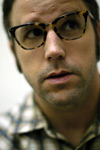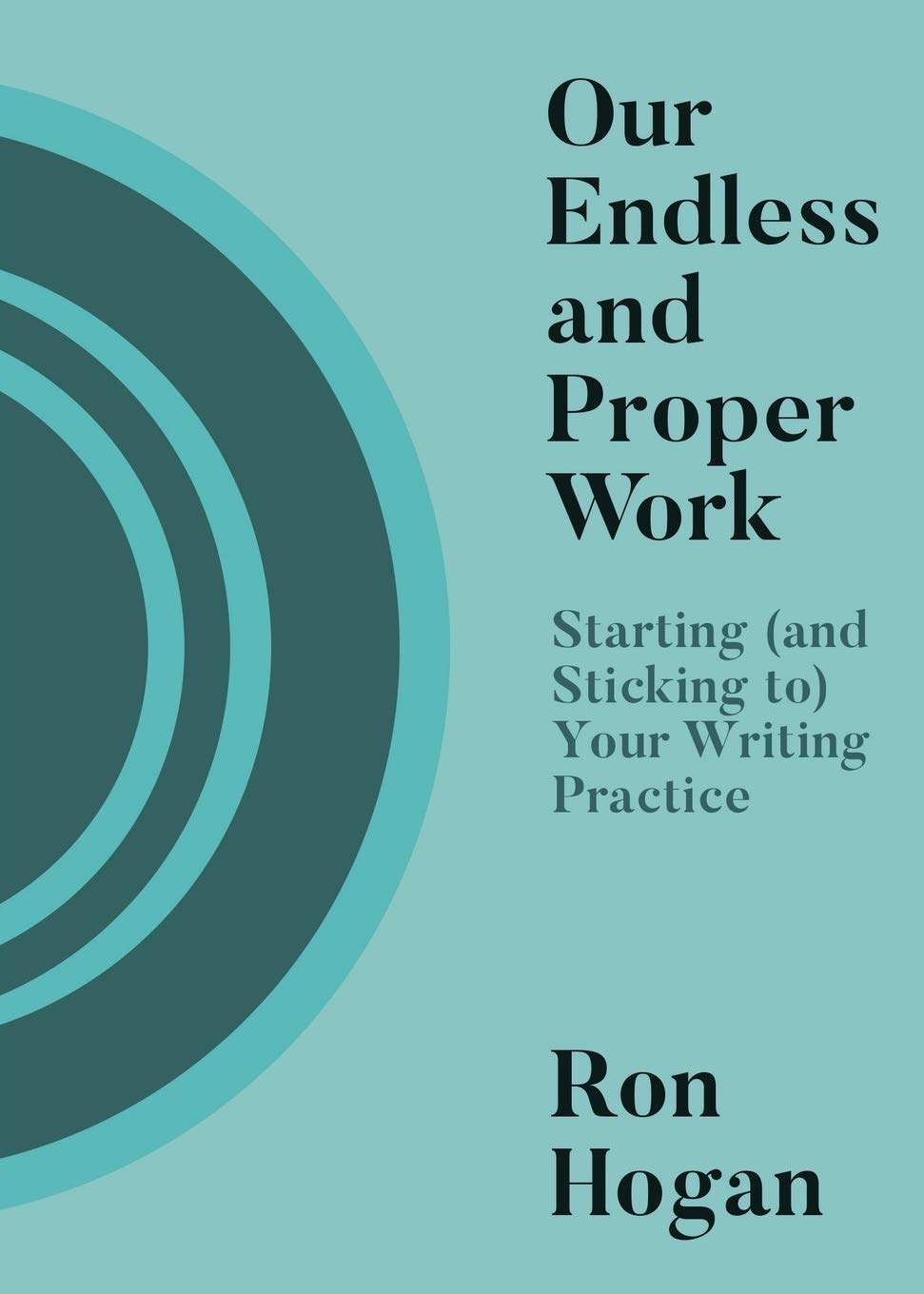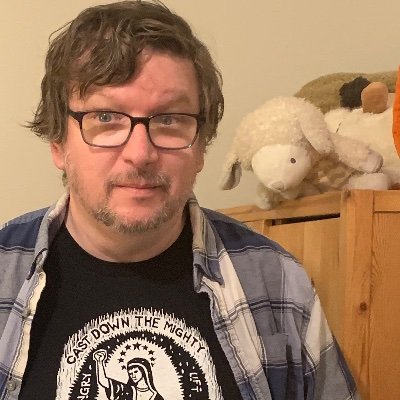David Wolman: Carroll, Clinton, Clemens… Lefties All
 I didn’t have to read too far into A Left-Hand Turn Around the World before I thought it might be a good idea to invite David Wolman to tell Beatrice readers about his favorite lefty writers. It was just so much fun to skip around and read about Wolman’s exploits hanging out with Portland Satanists and Japanese golfers, all in order to understand the mysteries of left-handedness. I’m not always a big fan of the “travelogue in support of quirky cultural theses” genre, but Wolman knnows how to be entertaining without constantly making the people he writes about the butt of his jokes. So I asked, he agreed to take some time out of his book tour, and, well, here he is…
I didn’t have to read too far into A Left-Hand Turn Around the World before I thought it might be a good idea to invite David Wolman to tell Beatrice readers about his favorite lefty writers. It was just so much fun to skip around and read about Wolman’s exploits hanging out with Portland Satanists and Japanese golfers, all in order to understand the mysteries of left-handedness. I’m not always a big fan of the “travelogue in support of quirky cultural theses” genre, but Wolman knnows how to be entertaining without constantly making the people he writes about the butt of his jokes. So I asked, he agreed to take some time out of his book tour, and, well, here he is…
Ah, to write with the left. It was Oscar Wilde (we presume) who coined that by-now-clichéd-among-southpaws line: “If the right side of the brain controls the left side of the body, then only left-handed people are in their right minds.” Wilde, it appears, was not left-handed, but Mark Twain, Lewis Carroll, Bill Clinton, and other famous names to put pen to page did so from the port side.
To a certain degree, any recap of favorite left-handed authors—including the shorty I plan to serve up three paragraphs from now—is fatally flawed from the get-go. For starters, a natural preference for the left hand has been perceived with such negative freight for so much of human history and across cultures, that scores of writers, famous and anonymous alike, may have been, in the neurological sense, left-handed. But as children these writers-to-be, thanks to the wisdom and vision of the adult population, were swiftly and comprehensively forced to switch to right-handed writing, eating, and violin-playing. How is anyone to know, then, with absolute certainty, that Shakespeare was not a southpaw?
14 November 2005 | guest authors |
Kevin Sampsell’s New Kind of Author Appreciation
 Kevin Sampsell’s commitment to indie literature runs deep. Not only does he run the small press section at Powell’s, he’s the founder and publisher of Future Tense Books. And, as you’ll learn in this essay he wrote for Beatrice, he’s willing to give out props to his heroes when he’s given the opportunity.
Kevin Sampsell’s commitment to indie literature runs deep. Not only does he run the small press section at Powell’s, he’s the founder and publisher of Future Tense Books. And, as you’ll learn in this essay he wrote for Beatrice, he’s willing to give out props to his heroes when he’s given the opportunity.
You know how you see kids with their backpacks or jackets all cluttered with buttons? They’re usually for their favorite bands or for some personal affirmation or political statement. Anything under the sun really—Johnny Depp, Bettie Page, “Stone Cold” Steve Austin, SpongeBob SquarePants, Jesus. So why not our favorite authors? A writer’s mug pinned to a denim jacket can be just as much a signifier of a wearer’s personality as an anarchy pin. If I saw someone with a David Sedaris pin I could guess that person had a good sense of humor, or if I saw Annie Lamott’s face on someone’s lapel I could probably guess that person is thoughtful and maybe a little spiritual.
Matthew Simmons and Shya Scanlon, editors at MonkeyBicycle, a very entertaining web site and literary journal, decided it was about time to usher in this new era of pinnable fashion. Matthew sent me an email to see if I’d like to act as the first curator. Since he knows that—like him—I work at a bookstore and read constantly, he figured I’d have a few authors to champion. He told me I could pick three authors and write short essays about each one. They would be printed as bookmarks, with a short excerpt of the author’s writing on one side. Artist Ellen Forney (author of I Was Seven in ’75) was lined up to draw portraits of the chosen authors. The buttons would be the style, the bookmarks the substance: a complete package!
Here’s a list of people I could have picked for my trio: Harry Crews, A.M. Homes, Ben Marcus, Larry Brown, Michelle Tea, Dave Eggers, Mark Leyner, and Terry Southern. They’ve all affected me a great deal, perhaps twisting and shaping me into the type of writer I’ve become. But the three that stood out for me, the three that captured some elusive greatness, some pinnacle of individual style that should become a benchmark for generations to come are Gary Lutz, Sam Lipsyte, and Diane Williams.
2 November 2005 | guest authors |

 Our Endless and Proper Work is my new book with Belt Publishing about starting (and sticking to) a productive writing practice.
Our Endless and Proper Work is my new book with Belt Publishing about starting (and sticking to) a productive writing practice. 
